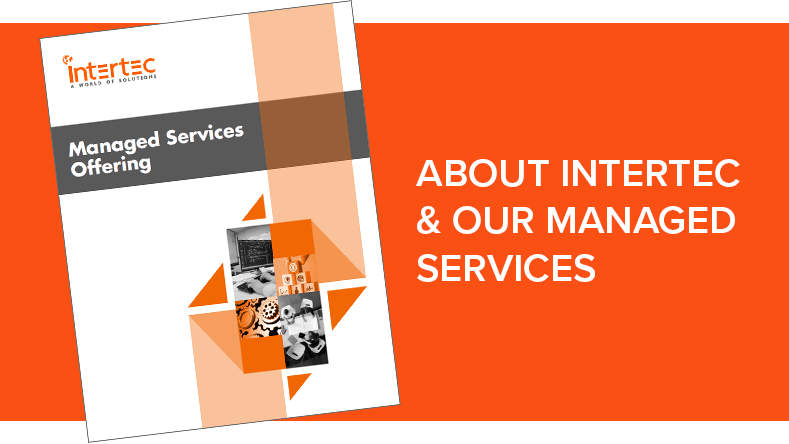Managed Service Providers (MSPs) are instrumental in the tech industry, providing their clients quality and efficient IT services via a team of experts. For both providers and clients, costs are an important factor to consider before partnering up with another organization. That being said, there are several ways that an MSP could choose to frame their pricing model, all of which come with varying advantages and disadvantages.
As MSPs offer an array of services, there is no standard way to bill all clients, so unique pricing models must be determined. Whether a client or MSP, understanding the implications of each pricing model is crucial to ensure maximized value for both parties.

Per-Device Pricing Model
The per-device model tends to be the simplest of them all. As an easy-to-quote model, MSPs can periodically charge their clients a flat fee for each type of device covered under their contract. For example, an MSP would designate a fee declaring $X per server, $Y per laptop, and $Z per printer.
As this model is so simple, it is fairly common for both MSPs and clients. As clients add more devices to their network, they can easily adjust their monthly fee to reflect it. Conversely, if a client does not add more devices, it can be challenging for MSPs to raise prices as costs are so clearly illustrated in this model.
Per-User Pricing Model
Similar to the per-device model is the per-user pricing model. The only difference between the two models is that the flat fee is billed per user per month in this model. In this model, all of the IT needs of a user are covered, regardless of the number of devices used. As a result of its simplicity, it is straightforward for clients to adjust and change their agreement as their business grows.
This model is often preferred by customers because it does not take into account the number of devices that must be maintained. That being said, customers typically end up paying more as their number of users increases. For companies with a significant number of devices, the per-user pricing model is recommended.
Monitoring-Only Pricing Model
One of the more simplified pricing models that an MSP could offer is the monitoring-only model. In this model, MSPs only provide monitoring and alerting services for a pre-determined portion of their client's IT infrastructure. Clients will be alerted of any issues within their infrastructure so that they can be transferred to and resolved by their internal IT department. If needed, the MSP could resolve these issues for additional charges.
The monitoring-only pricing model is typically favored by clients on a tight budget as it is relatively inexpensive and can be offered at a flat rate, per user per month, or per-device pricing model. That being said, it is low in cost because it provides clients with only the bare minimum of an MSP's services. This pricing model is only feasible for clients that already have an internal IT department with the capacity to fix issues as they are identified. For this model to work, MSPs must set clear expectations regarding remediation, responsibilities, and compliance with the on-site team to ensure that both parties agree.
Tiered Pricing Model
Perhaps the most popular pricing model for MSPs is the tiered pricing model. Tiered pricing offers MSPs the flexibility to design service packages in which the price increases from tier to tier as more robust services are offered. Clients can then choose the bundle of services that best suits their needs and budget. The tiers, or service packages, range from a basic level of services at a lower price to a full-service package for a higher price.
The flexibility offered by this model is highly beneficial for clients as it allows them to alter their service package as their needs or budget change. As a result, clients have more options for IT services and support as their business grows. Furthermore, as MSPs offer a wider range of service packages and pricing options, they open themselves to a broader range of potential clients.
While the flexibility of this model is an excellent advantage, it could make it more challenging for MSPs to manage clients as opposed to a single service offering. It can also confuse customers if the content of each service package is not explicitly stated, so it is vital to discuss with clients precisely what they will be receiving from the package they have chosen.
Value-Based (Flat Fee) Pricing Model
The value-based model, often referred to as the flat fee model, is a straightforward and comprehensive model. MSPs provide IT services for all components of their client's business, taking care of immediate pain points in addition to potential risks and latent needs. Essentially in this model, the MSP acts as an outsourced IT department for clients. This model is particularly desirable for companies wanting to apply all of their IT resources to strategic goals.
All-You-Can-Eat Pricing Model
In the all-you-can-eat model, MSPs provide particular IT services for a specific duration of the day for a flat fee per month while having the option to charge clients additional fees for services provided outside of the designated time frame. This model includes remote support, on-site support, and lab or bench time. Some MSPs may even provide 24/7 year-round support to customers utilizing this model.
This pricing model tends to be popular with customers as they can predict costs over a period of time while avoiding any billing fluctuations. For this reason, the all-you-can-eat pricing model may be a good choice for customers with a strict budget yet a need for robust IT services.
À La Carte Pricing Model
Polar to the all-you-can-eat model, the A la carte pricing model is similar to an open buffet of IT services. Clients have the option to pick and choose their desired services, essentially creating their own service package. This is highly beneficial for companies with specific needs such as disaster recovery, backup management, and patch management.
Through this model, customers can select and pay for only the services that they need. While this is appealing to clients, this model tends to go unfavored by MSPs as it limits profitability and can be complex to explain to prospective customers.
Break-Fix Pricing Model
While once popular, the break-fix pricing model has become less common for MSPs in recent years. This model can benefit new or retired MSPs or those looking for part-time work as it is not a highly intensive model. Clients simply pay for the services of an MSP as needed, and as a result, there is no monthly agreement or ongoing expenses necessary to consider.
This model tends to be more work than it is worth for MSPs, as the time and effort of fixing systems are significant for non-managed clients paying a one-time fee. Additionally, because clients can use MSPs once for a low cost, it disincentivizes them from maintaining their IT infrastructure or partnering with an MSP for more in-depth services.
Choosing the Right Model
It can be challenging for both MSPs and clients to determine which pricing model best suits your organization. While there is no one model to satisfy all needs, as an MSP, you can find a pricing model that reflects the value of your services while keeping customers happy. For customers, choosing an MSP with a pricing model that suits your needs and budget is essential to keeping up with modern technology in the business world.
When determining a pricing model, you should consider cost, scalability, technology, and company size, no matter your specific needs. Using this guide, both MSPs and customers have the information needed to select a pricing model that best serves their needs, maximizing value for both parties.









